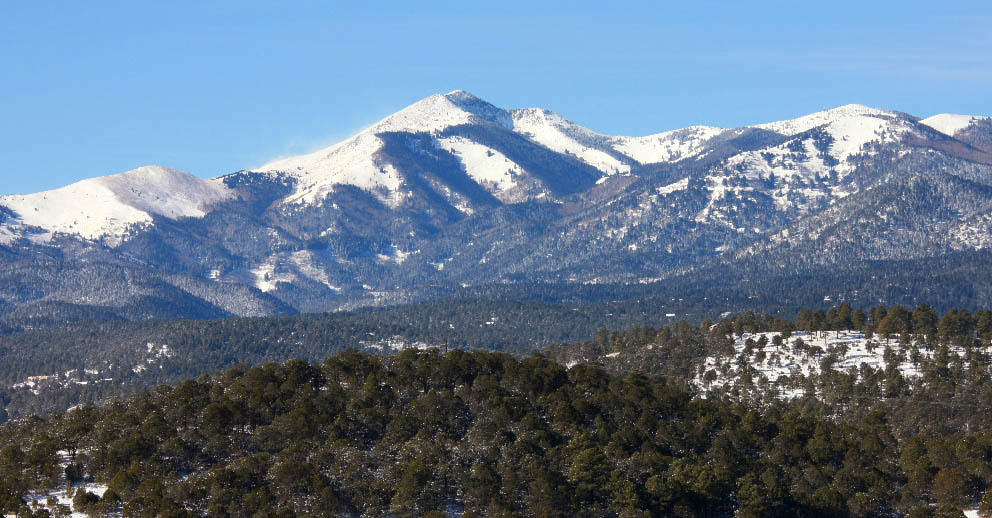History of The Area
“Go confidently in the direction of your dreams. Live the life you imagined.”
– Henry David Thoreau
450 A.D.
In the heart of Jornada Mogollon territory, a Shaman stands tall on a mesa, surveying the bustling valley below. The lush fields and pit houses are tended to by hardworking villagers, while children and their canine companions play games with sticks. A young mother carefully pours ground corn into an ornate bowl, but her dog accidentally knocks over a pot, shattering it into small pieces on the ground.
The Shaman, carrying a beautiful Olla filled with precious water, pours it onto the rocky bluff, watching as the liquid disappears into the dry, arid soil. On his shoulder rests a brightly colored Macaw, his sacred companion, who knows the fate of their people. Despite their resilience and hard work, the Shaman and the Macaw know that their people will soon disappear, unable to survive without the life-giving water that sustains them.
1626 A.D.
In search of Aztec gold, some of the more daring Spanish Conquistadors venture east from the Rio Grande toward Sierra Blanca and the Capitan Mountains. As the Church’s inquisition looms, they are also prepared to offer salvation to anyone they may encounter along the way.
Though the Conquistadors do not find the rumored gold in the unique east-to-west mountain range of the Capitans, they do discover ancient petroglyphs that tell stories of mystics and magic, remnants of past cultures. Unable to settle in the area at this time, they continue their journey north, unknowingly heading toward the violence that awaits them at the Pueblos near Santa Fe. Despite their unsuccessful search for gold, the Conquistadors’ encounters with the past and the present leave them forever changed.
1850 A.D.
The Spanish return to one of the valleys carved out of majestic canyons by the Rio Bonito. They call their village Las Placitas del Rio Bonito, later the name is changed to Lincoln after President Abraham Lincoln. At the time the county was the largest in the United States.
1855 A.D.
With the arrival of Fort Stanton, Lincoln County is transformed. Originally constructed to protect settlers from the nearby Mescalero Apache Indians, the fort becomes a vital presence in the area. However, the settlers soon discover that they must also protect themselves from one another, as tensions and conflicts arise within the growing community.
Despite these challenges, Fort Stanton remains an important part of the county’s history, representing both the struggles and the resilience of the people who called this rugged and beautiful land their home.
1861 A.D.
During the Civil War, Confederate soldiers occupied Fort Stanton until they faced repeated attacks during their patrols. As a result, they received orders to move to Mesilla, near Las Cruces. In a final act of defiance, the soldiers burned down the fort as they retreated. For several years, the site remained vacant until 1862 when famed frontiersman Kit Carson arrived in the area.
Over time, the fort’s ruins became the location of Captain Paul Dowlin’s mill, which he opened with his brother in 1868. This historic mill marked the beginning of what would eventually become the town of Ruidoso, a vibrant and beloved community in Lincoln County.
1878 A.D.
The death of John Tunstall marks the beginning of the infamous Lincoln County War, a conflict born from a bitter rivalry between two powerful local merchants, the Tunstall clan and the Murphy-Dolan faction. Despite the prosperity brought by the Fort and the Mescalero Apache Reservation, greed and jealousy fuelled the fighting between ranchers, farmers and skilled workers who supported the rival factions. The murder of Tunstall, who had partnered with John Chisolm to open Lincoln’s first bank, was a catalyst for violence, especially for his friend, the infamous outlaw Billy the Kid.
The war saw battles, killings, and even the burning of the home of Alex McSween, who chose to fight with his words and the law rather than a gun. His death was a great loss, but the Kid continued to fight until he was captured and eventually sentenced to death. The Lincoln County War remains a tragic chapter in New Mexico’s history, revealing the devastating consequences of greed, jealousy and the thirst for power.
1881 A.D.
Billy the Kid’s legendary escape from jail is one of the most captivating stories in Lincoln County’s history. After being arrested and held in jail, Billy saw an opportunity and took it. He managed to acquire a pistol and shot and killed Deputy Bell before making his way to the window with Ollinger’s own shotgun.
There, he allegedly said, “Hello Bob” before firing both barrels into Ollinger’s chest. The details of what happened next are shrouded in mystery and have been debated for years. Although Billy the Kid’s fate is now known – he eventually died at the hands of Sheriff Pat Garrett – the circumstances of his death remain a mystery. Perhaps we’ll never know the full story, but the legacy of Billy the Kid lives on in Lincoln County’s history and folklore.
1945 A.D.
On July 16, 1945, the first atomic bomb was detonated near the western edge of Lincoln County, at a site known as Trinity. This event marked a turning point in world history and changed the course of warfare forever.
Interestingly, a few years later, in 1947, a supposed UFO crashed near Corona, which is also located in Lincoln County. While the connection between the atomic bomb and the alleged UFO crash may seem like a coincidence, it has sparked speculation and intrigue for decades. Some have suggested that the crash was actually a government cover-up, while others believe it was a genuine extraterrestrial event. Regardless, these two events have left an indelible mark on Lincoln County’s history and continue to fascinate people around the world.
1959 A.D.
Galobar, a two-year-old horse, made history by winning the inaugural All American Futurity race held at the racetrack in Ruidoso Downs. Today, the race has become an internationally renowned event that draws visitors from all corners of the world to witness America’s fastest horses compete for the coveted title. The purse for last year’s race was an incredible $2.6 million, solidifying its status as one of the most prestigious horse racing events in the world.
1960’s – 1990’s A.D.
Lincoln County, the Playground of the Southwest! The region is a tourist hotspot and its impact is felt across all the communities. The leading economic driver is tourism, attracting visitors from far and wide, including California, Texas and Mexico. The natural beauty that surrounds us is a major drawcard, as are the skiing, horse racing, Spencer Theater, Inn of the Mountain Gods casino and other fantastic events. We all take great pride in being a part of this vibrant and thriving destination.
2013 A.D.
The Shaman made his way to the mesa on a warm August afternoon, looking out over the stunning landscape known as “Rainmakers.” As he reached the top, water began to flow from his Olla, a powerful and awe-inspiring sight.

